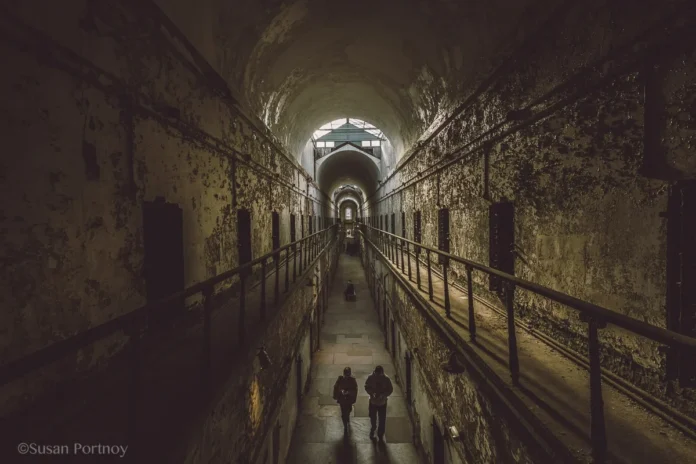Considered to be the first official prison in history, Eastern State was founded on October 25, 1829, and was designed by John Haviland. Separate confinement was promoted as a type of rehabilitation by Eastern State’s innovative incarceration system, which was known as the “Pennsylvania system” or separate system (the overseers were required to see each prisoner three times a day and the warden was legally required to visit every prisoner every day).
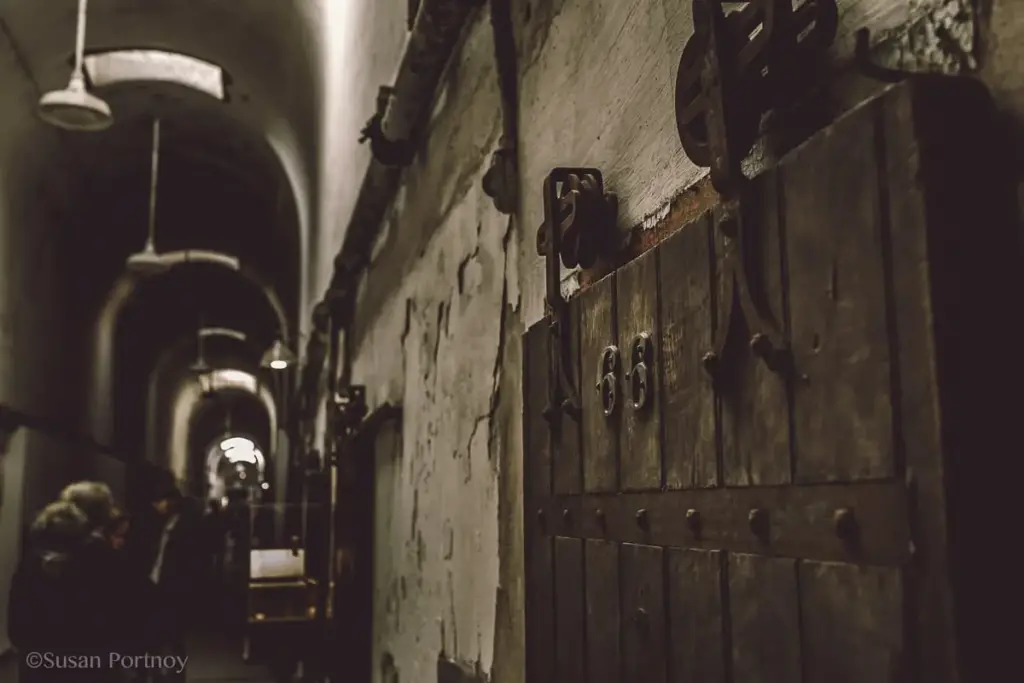
Simultaneously, the Pennsylvania method was opposed by the Auburn system (sometimes called the New York system), which held that prisoners ought to be forced to work in silence and endure physical punishment (Sing Sing prison served as an example of the Auburn system). While the Auburn system gained popularity in the US, more than 300 facilities worldwide used Eastern State’s radial floor plan and solitary confinement method as a model.
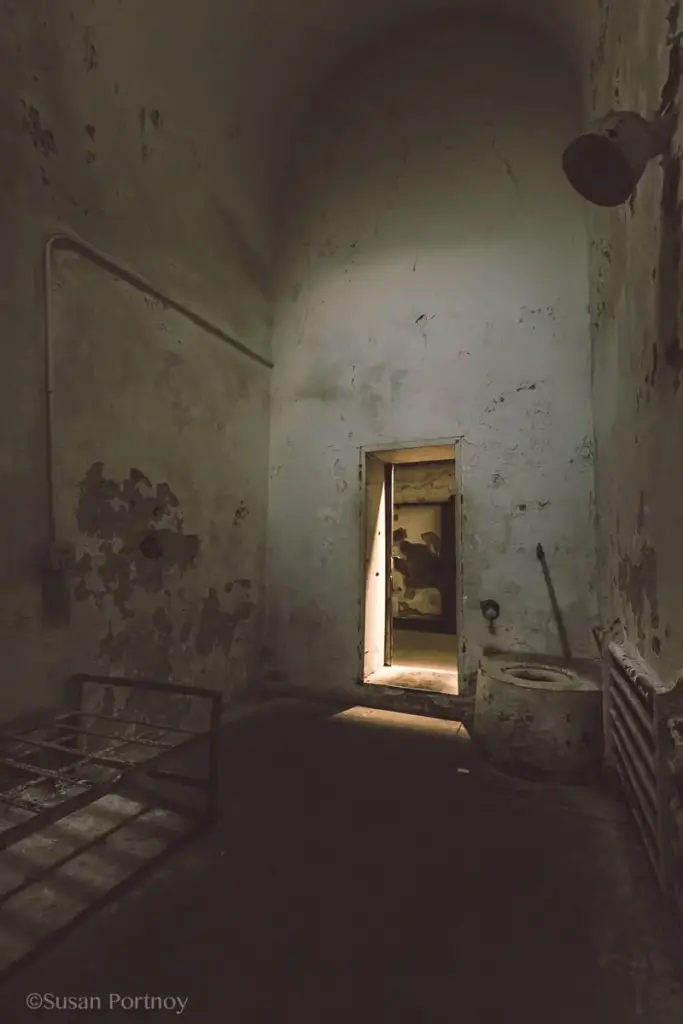
Originally, prisoners were housed in cells that could only be accessed by passing through a tiny exercise yard that was next to the jail’s back. The cell blocks were accessible through a narrow entryway that was barely large enough to let meals through. After this idea was shown to be unrealistic, cells were erected in the middle of the building complex, with metal doors that were covered by a thick wooden door to block out noise, allowing prisoners to enter and depart the cell blocks. The design of the halls was inspired by a cathedral.

During the nineteenth century, the jail was a well-liked tourist destination and one of the main public works projects of the early republic. In 1929, notable inmates included Al Capone and Willie Sutton, while important visitors included Charles Dickens and Alexis de Tocqueville. Even though inmates were not allowed to communicate with friends or relatives while incarcerated, visitors interacted with inmates in their cells to show that they were not alone.
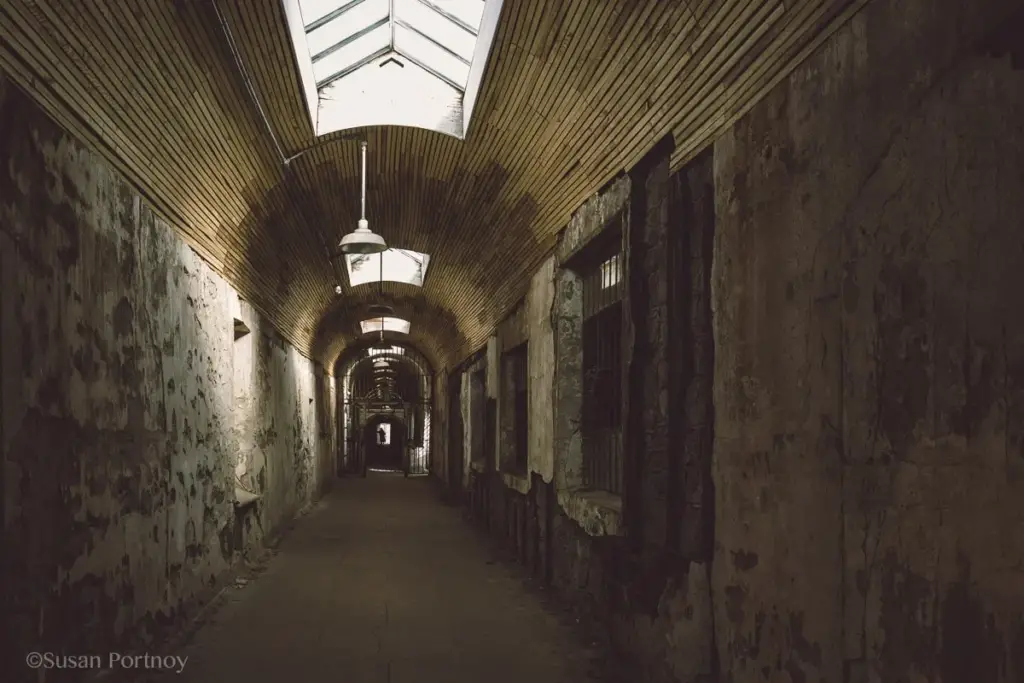
Charles Dickens wrote, “The regime here is severe, strict, and dismal solitary imprisonment,” after visiting the institution in 1842. I think it’s severe and unfair in its implications. This constant, daily manipulation of the brain’s intricate workings is, in my opinion, far worse than any physical suffering. Solitary confinement is a harsh, rigid, and depressing system of treatment. I think it’s severe and unfair in its implications. I believe that this constant, daily disruption of the brain’s intricate workings is far worse than any physical discomfort.
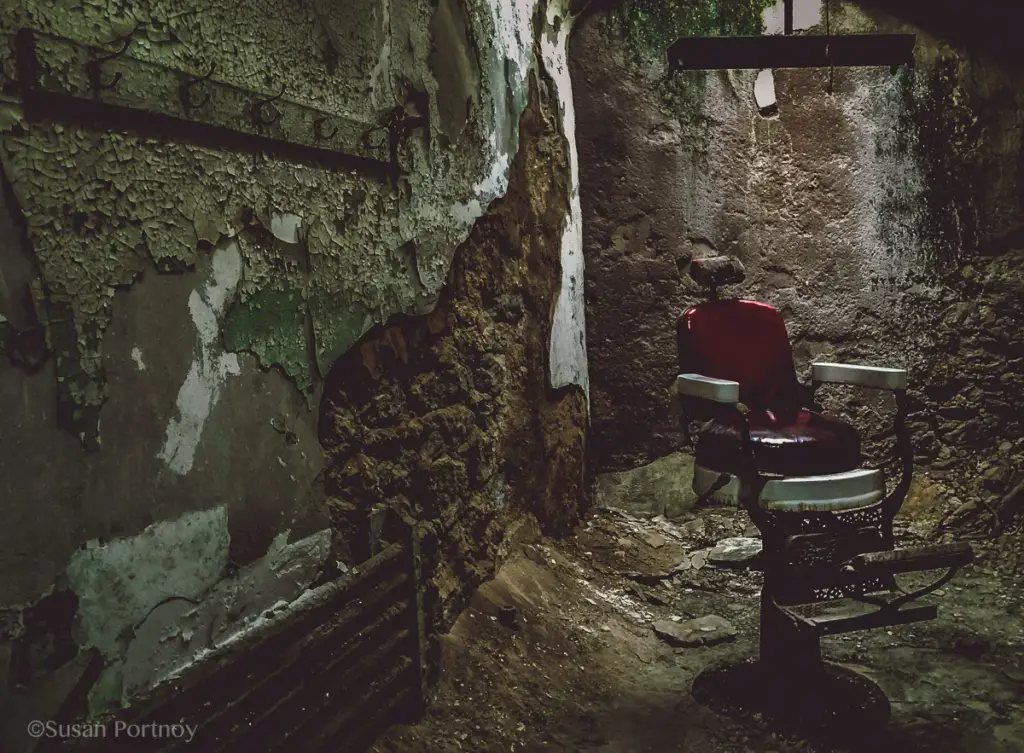
First-time offenders were sometimes sentenced to two years in prison; most early inmates were small criminals arrested for various theft and robbery crimes (muggers, pickpockets, purse-snatchers, burglars, etc.).
In addition to punishing offenders, the penitentiary was meant to inspire spiritual reflection and change in them. There is little evidence to support the claim that Quakers were the inspiration for the Pennsylvania System. William White, the Anglican bishop of Philadelphia, led the Society for Alleviating the Miseries of Public Prisons, which eventually became the Pennsylvania Prison Society, for nearly fifty years, although less than half of its members were Quakers.The method’s proponents believed that by silently subjecting prisoners to thoughts of their actions and the unpleasantness of their crimes, they would develop true remorse.





